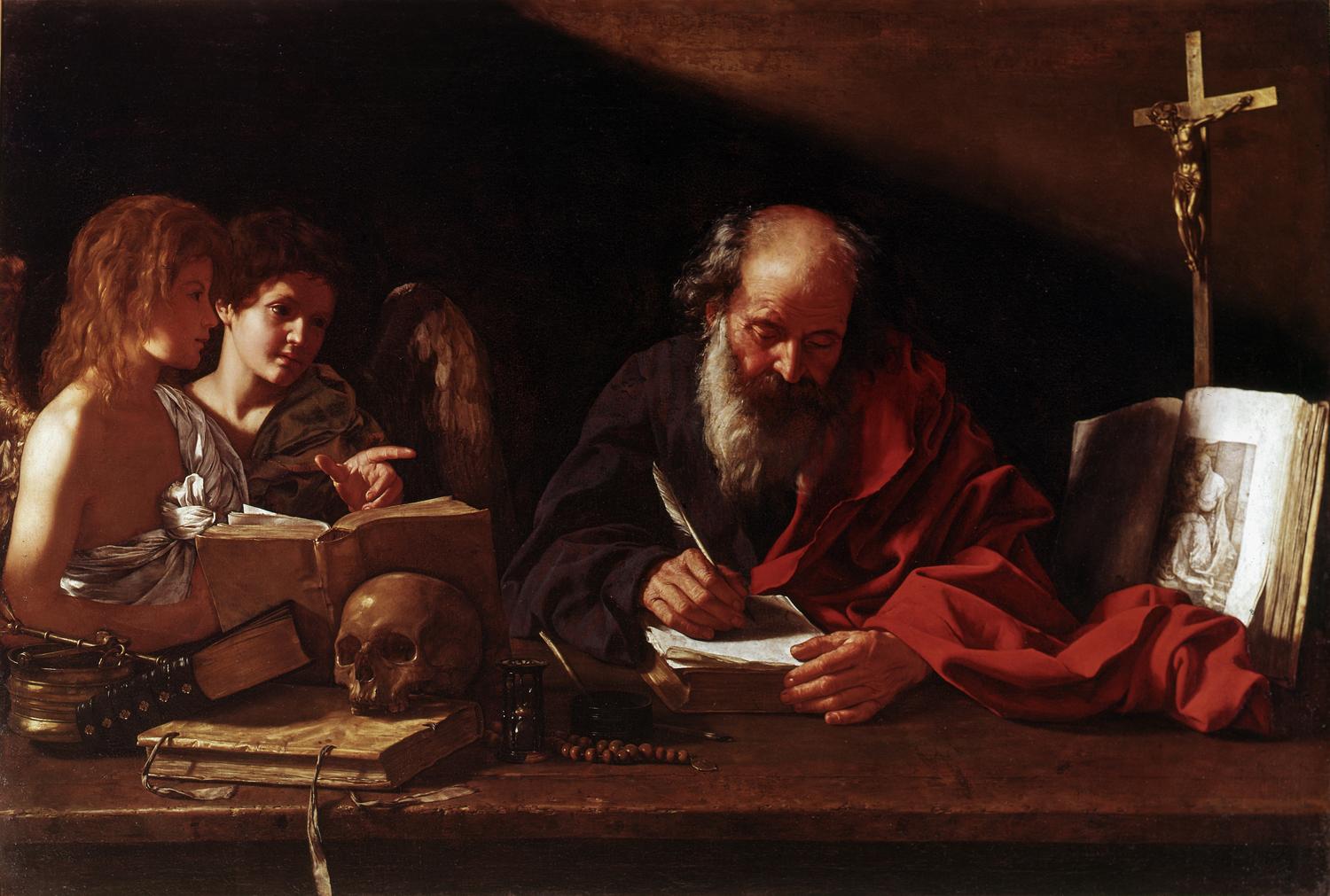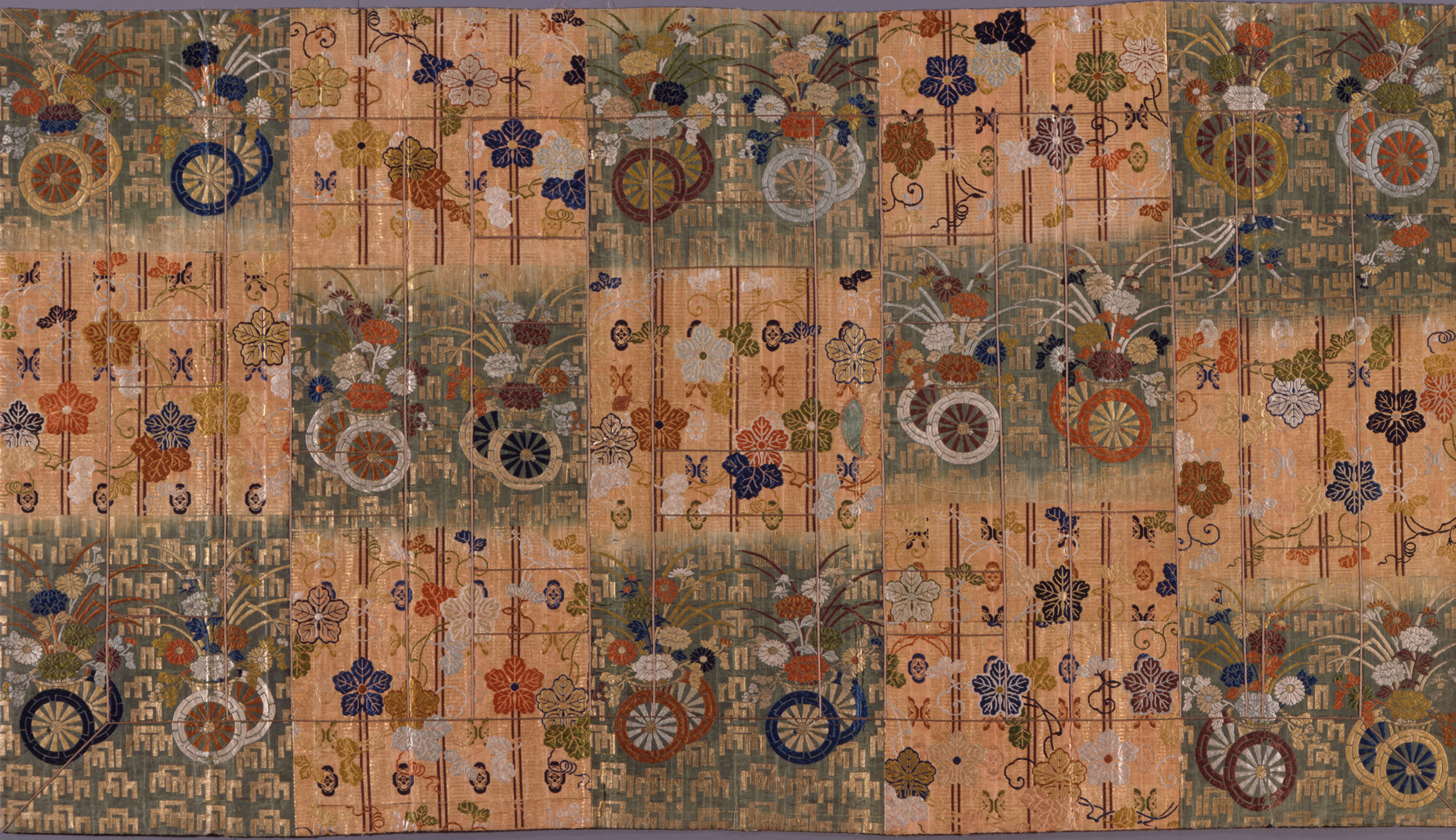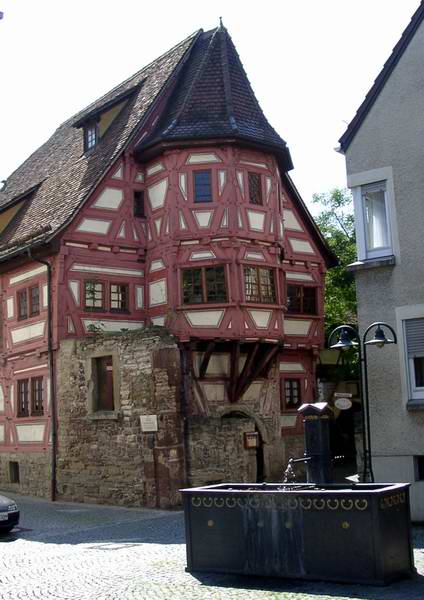|
Saint Colette
Colette of Corbie, PCC (13 January 1381 – 6 March 1447) was a French abbess and the foundress of the Colettine Poor Clares, a reform branch of the Order of Saint Clare, better known as the Poor Clares. She is honored as a saint in the Catholic Church. Due to a number of miraculous events claimed during her life, she is venerated as a patron saint of women seeking to conceive, expectant mothers, and sick children. Life Early life She was born Nicolette Boellet (or Boylet) in the village of Corbie, in the Picardy region of France, on 13 January 1381David Farmer, Oxford Dictionary of Saints (Oxford University Press, 1996), p105. to Robert Boellet, a poor carpenter at the noted Benedictine Abbey of Corbie, and to his wife, Marguerite Moyon. Her contemporary biographers say that her parents had grown old without having children, before praying to Saint Nicholas for help in having a child. Their prayers were answered when, at the age of 60, Marguerite gave birth to a daughter. ... [...More Info...] [...Related Items...] OR: [Wikipedia] [Google] [Baidu] |
Catholic Church
The Catholic Church (), also known as the Roman Catholic Church, is the List of Christian denominations by number of members, largest Christian church, with 1.27 to 1.41 billion baptized Catholics Catholic Church by country, worldwide as of 2025. It is among the world's oldest and largest international institutions and has played a prominent role in the history and development of Western civilization.Gerald O'Collins, O'Collins, p. v (preface). The church consists of 24 Catholic particular churches and liturgical rites#Churches, ''sui iuris'' (autonomous) churches, including the Latin Church and 23 Eastern Catholic Churches, which comprise almost 3,500 dioceses and Eparchy, eparchies List of Catholic dioceses (structured view), around the world, each overseen by one or more Bishops in the Catholic Church, bishops. The pope, who is the bishop of Rome, is the Papal supremacy, chief pastor of the church. The core beliefs of Catholicism are found in the Nicene Creed. The ... [...More Info...] [...Related Items...] OR: [Wikipedia] [Google] [Baidu] |
Patron Saint
A patron saint, patroness saint, patron hallow or heavenly protector is a saint who in Catholicism, Anglicanism, Eastern Orthodoxy or Oriental Orthodoxy is regarded as the heavenly advocate of a nation, place, craft, activity, class, clan, family, or person. The term may be applied to individuals to whom similar roles are ascribed in other religions. In Christianity Saints often become the patrons of places where they were born or had been active. However, there were cases in medieval Europe where a city which grew to prominence obtained for its cathedral the remains or some relics of a famous saint who had lived and was buried elsewhere, thus making them the city's patron saint – such a practice conferred considerable prestige on the city concerned. In Latin America and the Philippines, Spanish and Portuguese explorers often named a location for the saint on whose feast or commemoration day they first visited the place, with that saint naturally becoming the area's patron ... [...More Info...] [...Related Items...] OR: [Wikipedia] [Google] [Baidu] |
Antipope Benedict XIII
Pedro Martínez de Luna y Pérez de Gotor (25 November 1328 – 23 May 1423), known as () or Pope Luna, was an Aragonese nobleman who was antipope with the regnal name Benedict XIII during the Western Schism. Early life Pedro Martínez de Luna was born at Illueca, Kingdom of Aragon (part of modern Spain), in 1328. He belonged to the de Luna family, who were part of the Aragonese nobility. He studied law at the University of Montpellier, where he obtained his doctorate and later taught canon law. His knowledge of canon law, noble lineage, and austere way of life won him the approval of Pope Gregory XI, who appointed de Luna to the position of Cardinal Deacon of Santa Maria in Cosmedin on 20 December 1375.Kirsch, Johann Peter. "Pedro de Luna." The Catholic Encyclopedia Vol. 9. New York: Rob ... [...More Info...] [...Related Items...] OR: [Wikipedia] [Google] [Baidu] |
Second Order (religious)
When referring to Roman Catholic religious orders, the term second order refers to those communities of contemplative cloistered nuns which are a part of the religious orders that developed in the Middle Ages. History Dominican In early thirteenth century, St. Dominic Guzman was a canon regular at the Cathedral of Osma in Spain. He accompanied his bishop on a trip to Denmark to arrange a marriage between the son of the King of Castile and a member of the Danish royal family. On the return trip, Dominic encountered the followers of the Duke of Albi in southern France. The Duke was a leading Cathar, which embraced a gnostic form of Christianity. Dominic undertook a preaching campaign to them, in order to bring them back to an orthodox understanding of the faith. Several women who responded to his preaching sought a completely new direction in their lives. In response to this, Dominic established a house for them in Prouille in 1206, where they could lead lives of prayer and penanc ... [...More Info...] [...Related Items...] OR: [Wikipedia] [Google] [Baidu] |
Ascetic
Asceticism is a lifestyle characterized by abstinence from worldly pleasures through self-discipline, self-imposed poverty, and simple living, often for the purpose of pursuing spiritual goals. Ascetics may withdraw from the world for their practices or continue to be part of their society, but typically adopt a frugal lifestyle, characterised by the renunciation of material possessions and physical pleasures, and also spend time fasting while concentrating on the practice of religion, prayer, or meditation. Some individuals have also attempted an ascetic lifestyle to free themselves from addictions to things such as alcohol, tobacco, drugs, entertainment, sex, food, etc. Asceticism has been historically observed in many religious and philosophical traditions, most notably among Ancient Greek philosophical schools (Epicureanism, Gymnosophism, Stoicism, and Pythagoreanism), Indian religions (Buddhism, Hinduism, Jainism), Abrahamic religions (Christianity, Judaism, Islam), an ... [...More Info...] [...Related Items...] OR: [Wikipedia] [Google] [Baidu] |
Hermit
A hermit, also known as an eremite (adjectival form: hermitic or eremitic) or solitary, is a person who lives in seclusion. Eremitism plays a role in a variety of religions. Description In Christianity, the term was originally applied to a Christian who lives the eremitic life out of a religious conviction, namely the Catholic spirituality#Desert spirituality, Desert Theology of the Old Testament (i.e., the 40 years wandering in the Zin Desert, desert that was meant to bring about a change of heart). In the Christian tradition the eremitic life is an early form of Monk, monastic living that preceded the monastic life in the cenobium. In chapter 1, the Rule of St Benedict lists hermits among four kinds of monks. In the Roman Catholic Church, in addition to hermits who are members of religious institutes, the Canon law (Catholic Church), Canon law (canon 603) recognizes also Consecrated life#Other forms of consecrated life, diocesan hermits under the direction of their diocesan b ... [...More Info...] [...Related Items...] OR: [Wikipedia] [Google] [Baidu] |
Third Order Of St
Third or 3rd may refer to: Numbers * 3rd, the ordinal form of the cardinal number 3 * , a fraction of one third * 1⁄60 of a ''second'', i.e., the third in a series of fractional parts in a sexagesimal number system Places * 3rd Street (other) * Third Avenue (other) * Highway 3 Music Music theory * Interval number of three in a musical interval **Major third, a third spanning four semitones **Minor third, a third encompassing three half steps, or semitones **Neutral third, wider than a minor third but narrower than a major third ** Augmented third, an interval of five semitones ** Diminished third, produced by narrowing a minor third by a chromatic semitone *Third (chord), chord member a third above the root *Degree (music), three away from tonic **Mediant, third degree of the diatonic scale **Submediant, sixth degree of the diatonic scale – three steps below the tonic ** Chromatic mediant, chromatic relationship by thirds *Ladder of thirds, similar to t ... [...More Info...] [...Related Items...] OR: [Wikipedia] [Google] [Baidu] |
Religious Habit
A religious habit is a distinctive set of clothing worn by members of a religious order. Traditionally, some plain garb recognizable as a religious habit has also been worn by those leading the religious Hermit, eremitic and Anchorite, anchoritic life, although in their case without conformity to a particular uniform style. Uniformity and distinctiveness by order often evolved and changed over time. Interpretation of terms for clothes in religious rules could change over centuries. Furthermore, every time new communities gained importance in a cultural area the need for visual separation increased for new as well as old communities. Thus, modern habits are rooted in historic forms, but do not necessarily resemble them in cut, color, material, detail or use. In Christian monasticism, Christian monastic orders of the Catholic church, Catholic, Lutheranism, Lutheran and Anglicanism, Anglican Churches, the habit often consists of a tunic covered by a scapular and cowl, with a hood ... [...More Info...] [...Related Items...] OR: [Wikipedia] [Google] [Baidu] |
Benedictine
The Benedictines, officially the Order of Saint Benedict (, abbreviated as O.S.B. or OSB), are a mainly contemplative monastic order of the Catholic Church for men and for women who follow the Rule of Saint Benedict. Initiated in 529, they are the oldest of all the religious orders in the Latin Church. The male religious are also sometimes called the Black Monks, especially in English speaking countries, after the colour of their habits, although some, like the Olivetans, wear white. They were founded by Benedict of Nursia, a 6th-century Italian monk who laid the foundations of Benedictine monasticism through the formulation of his Rule. Benedict's sister, Scholastica, possibly his twin, also became a religious from an early age, but chose to live as a hermit. They retained a close relationship until her death. Despite being called an order, the Benedictines do not operate under a single hierarchy. They are instead organized as a collection of autonomous monasteries ... [...More Info...] [...Related Items...] OR: [Wikipedia] [Google] [Baidu] |
Beguines
The Beguines () and the Beghards () were Christian lay religious orders that were active in Western Europe, particularly in the Low Countries, in the 13th–16th centuries. Their members lived in semi-monastic communities but did not take formal religious vows. Although they promised not to marry "as long as they lived as Beguines", to quote an early Rule of Life, they were free to leave at any time. Beguines were part of a larger spiritual revival movement of the 13th century that stressed imitation of Jesus' life through voluntary poverty, care of the poor and sick, and religious devotion. Etymology The term "Beguine" (; ) is of uncertain origin and may have been pejorative. Scholars no longer credit the theory expounded in the ''Encyclopædia Britannica'' Eleventh Edition (1911) that the name derived from Lambert le Bègue, a priest of Liège. Other theories, such as derivation from the name of St. Begga and from the purported, reconstructed Old Saxon word , "to beg" or ... [...More Info...] [...Related Items...] OR: [Wikipedia] [Google] [Baidu] |
Saint Nicholas
Saint Nicholas of Myra (traditionally 15 March 270 – 6 December 343), also known as Nicholas of Bari, was an early Christian bishop of Greeks, Greek descent from the maritime city of Patara (Lycia), Patara in Anatolia (in modern-day Antalya Province, Turkey) during the time of the Roman Empire. Because of the many miracles attributed to his intercession, he is also known as Nicholas the Wonderworker. Saint Nicholas is the patron saint of sailors, merchants, archers, repentant thieves, children, brewers, pawnbrokers, toymakers, unmarried people, and students in various cities and countries around Europe. His reputation evolved among the pious, as was common for early Christian saints, and his legendary habit of secret gift-giving gave rise to the folklore of Santa Claus ("Saint Nick") through Sinterklaas. Little is known about the historical Saint Nicholas. The earliest accounts of his life were written centuries after his death and probably contain legendary elaborations. H ... [...More Info...] [...Related Items...] OR: [Wikipedia] [Google] [Baidu] |
Corbie Abbey
Corbie Abbey is a former Benedictine monastery in Corbie, Picardy, France, dedicated to Saint Peter. It was founded by Balthild, the widow of Clovis II, who had monks sent from Luxeuil. The Abbey of Corbie became celebrated both for its library and the scriptorium. Foundation It was founded in 661 under the Merovingian royal patronage of Balthild, widow of Clovis II, and her son Clotaire III. The first monks came from Luxeuil Abbey, which had been founded by Saint Columbanus in 590, and the Irish respect for classical learning fostered there was carried forward at Corbie. Theodefrid was the first abbot. The rule of the founders was based on the Benedictine rule, as Columbanus had modified it. Its scriptorium came to be one of the centres of work of manuscript illumination when the art was still fairly new in western Europe. The clear and legible hand known as Carolingian minuscule was also developed at the scriptorium at Corbie, as well as a distinctive style of illum ... [...More Info...] [...Related Items...] OR: [Wikipedia] [Google] [Baidu] |







